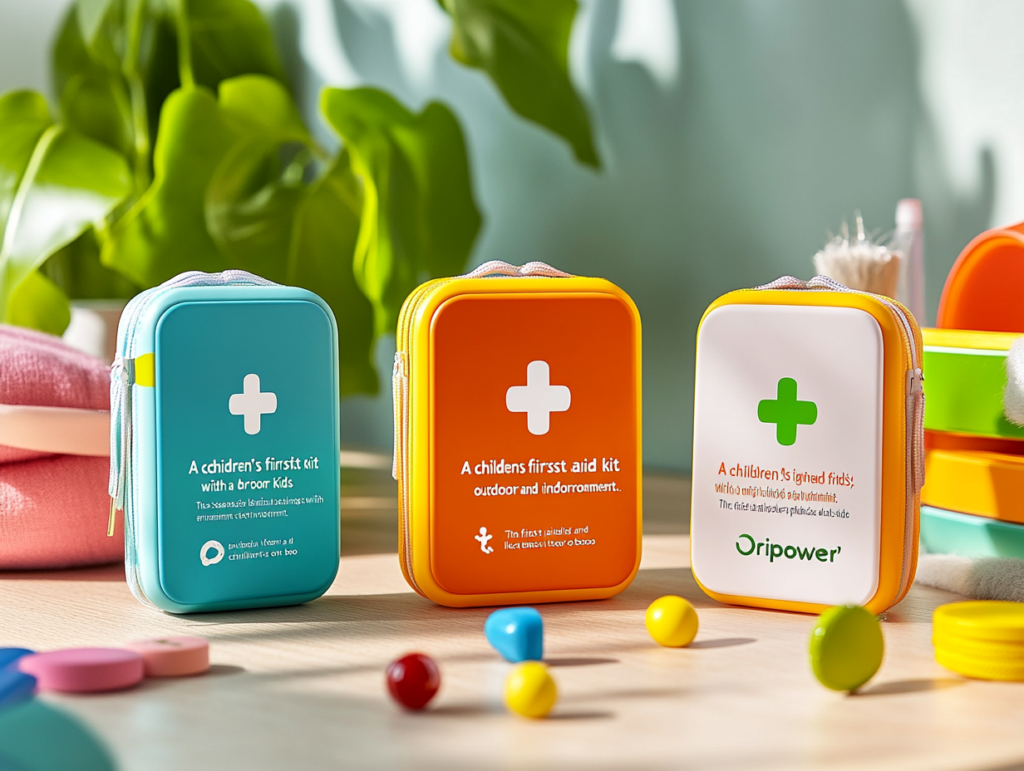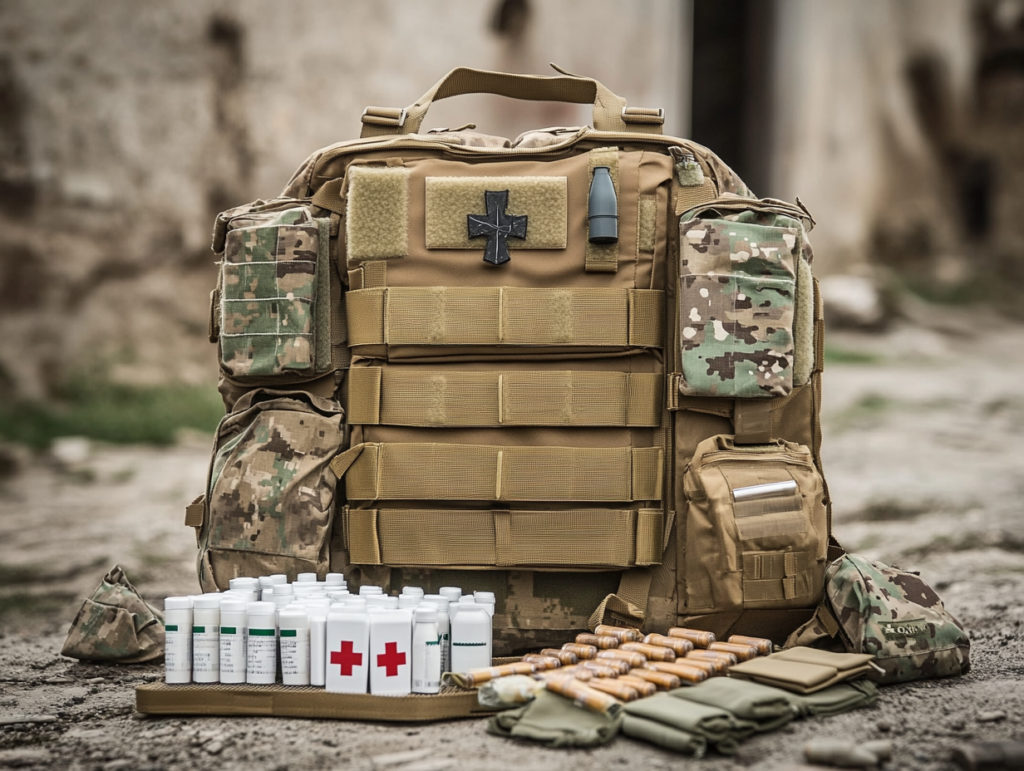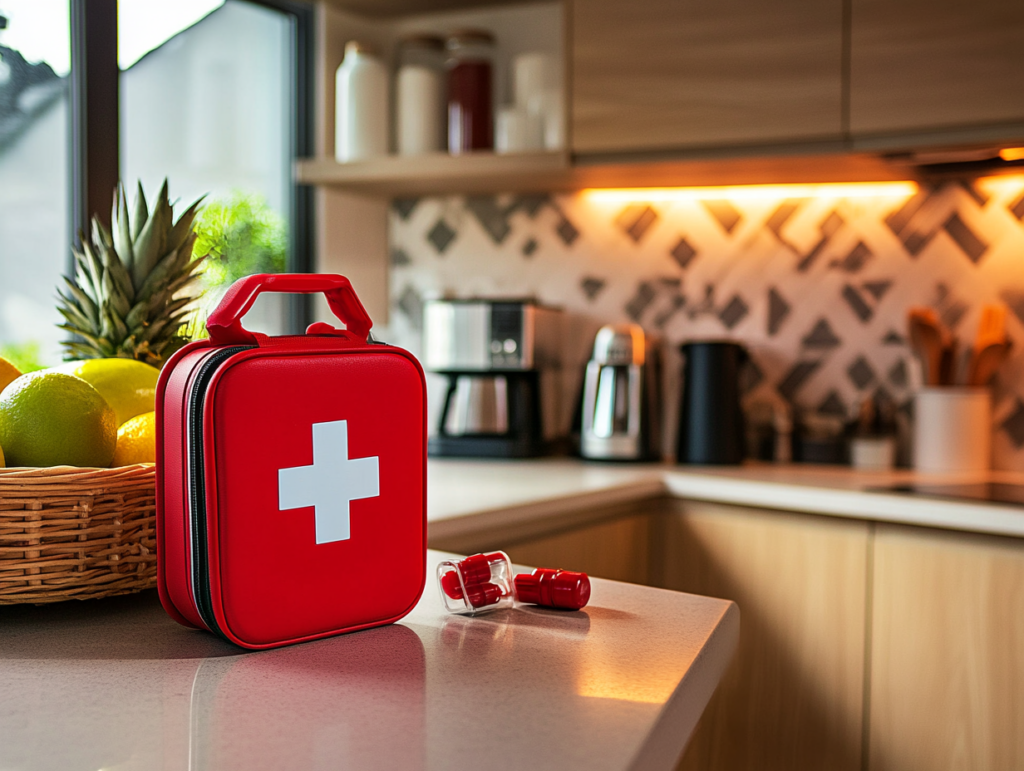When it comes to choosing a first aid kit for children, it’s essential to consider their unique needs and ensure that the kit is well-equipped to handle various emergencies. Here are some practical suggestions to help you select the right first aid kit for your little ones.
Consider the Bag Material
- Durable and Waterproof: Opt for a first aid kit with a bag made of durable materials such as nylon or polyester. These materials are not only strong but also waterproof, protecting the contents from moisture and damage. A waterproof bag is especially important in case of accidental spills or exposure to wet environments. For example, if you’re taking your child on a camping trip or to the beach, a waterproof first aid kit can ensure that the supplies remain dry and usable.
- Easy to Clean: Choose a bag that is easy to clean. Children are often messy, and there’s a chance that the first aid kit may come into contact with dirt, spills, or other contaminants. A bag that can be wiped clean with a damp cloth or easily washed will help maintain hygiene and ensure the kit is always ready for use.
- Lightweight and Portable: Look for a first aid kit that is lightweight and easy to carry. This is particularly important if you plan to take the kit on outings, vacations, or to school. A lightweight kit won’t add excessive weight to your bag or become a burden to carry around.
Select Appropriate Contents for Children’s Special Needs
- Basic First Aid Supplies: A good children’s first aid kit should include essential items such as adhesive bandages in various sizes, gauze pads, sterile wipes for cleaning wounds, scissors, tweezers, and a thermometer. These items are useful for treating minor cuts, scrapes, and bruises.
- Antiseptic Solutions: Include antiseptic solutions like hydrogen peroxide or iodine to clean wounds and prevent infection. Make sure to choose products that are safe for children and follow the instructions carefully when using them.
- Medications: Depending on your child’s age and needs, consider including over-the-counter medications such as pain relievers (for example, acetaminophen or ibuprofen), antihistamines for allergic reactions, and a topical antibiotic ointment. However, always consult a healthcare professional before giving any medications to your child.
- First Aid Manual: A first aid manual is an essential item in any first aid kit. It provides step-by-step instructions on how to handle various emergencies, including choking, burns, and bleeding. Make sure the manual is easy to understand and includes illustrations or diagrams for quick reference.
- Child-Specific Items: For younger children, consider including items such as pacifiers, teething rings, or a small toy to help calm them down in case of an emergency. For older children, you might include items like a whistle or a small flashlight.
Consider the Size and Organization of the Kit
- Appropriate Size: Choose a first aid kit that is the right size for your needs. If you’re planning to keep the kit at home, a larger kit with more supplies may be suitable. However, if you need a portable kit for outings or travel, a smaller, compact kit is more convenient. Consider the number of people who will be using the kit and the types of activities you’ll be engaged in when choosing the size. 36
- Organization: A well-organized first aid kit is essential for quick and easy access to supplies in an emergency. Look for a kit with compartments or pockets to keep items separated and easy to find. Some kits even come with labeled compartments or color-coded items for added convenience. 36
In conclusion, choosing a first aid kit for children requires careful consideration of their unique needs. By selecting a durable bag material, appropriate contents, and a well-organized kit, you can ensure that you’re prepared to handle any emergencies that may arise. Remember to regularly check and restock your first aid kit to ensure that it remains in good condition and is ready for use when needed.
What are the differences in the needs of children of different ages for first aid kit items?
There are some differences in the needs of first aid kits for children of different ages, which are described in detail below.
1.Young children (0 – 3 years old)
Children in this age group are prone to accidents due to their fragile bodies, limited mobility and curiosity about things around them. The needs of children in this age group for first aid kit items are mainly in the following areas:
Tweezers: Used to hold alcohol cotton balls, wipe wounds and disinfect them. Pointed tweezers can also be used to remove small thorns stuck in the baby’s hand. Children of this age have delicate skin and are easily injured by small thorns and other foreign objects, so the role of tweezers is particularly important.
Scissors: can be used to cut gauze, bandages or tape and other items. For younger children, skin abrasions may be caused by playing or accidental falls, etc., and need to be bandaged with gauze and bandages; scissors can be used to easily cut appropriate sizes of bandaging materials.
2.Lower elementary school children (6 – 7 years old)
Children in this age group are beginning to have a certain degree of mobility and self-awareness and may have accidents at school or during outdoor activities. Their needs for first aid kit items are as follows:
Knowledge of basic first aid: 6 – 7 year olds can be trained in basic first aid measures such as proper assessment of consciousness and breathing, knowing the correct emergency telephone number, giving the correct emergency call information, understanding the correct recovery position and performing proper airway management. Therefore, some first aid knowledge cards can be prepared in the first aid kit to help them recall the correct first aid in case of emergency.
Simple wound treatment items: As children in this age group are more active, they may have small wounds such as bumps, bruises and scratches. Various sizes of band-aids, sterile gauze and medical tapes should be prepared in the first-aid kit so that wounds can be treated in a timely manner.
3.Children in the upper grades of elementary school and above (older children)
As children grow older, the range and intensity of their activities further increase, and their needs for first aid kit items vary:
Adolescent Psychological First Aid Items: During adolescence, mental health issues come to the fore. If an adolescent is diagnosed with a mental illness such as depression, early identification and effective recourse is important. Therefore, a first aid kit for teenagers could include psychological first aid items such as a psychological first aid guide for parents and peers on how to recognize and support someone with a mental illness.
More comprehensive first aid tools: Older children may be involved in more strenuous sports or outdoor activities, and first aid kits can include items for more complex situations, such as disposable gloves and tweezers, so as to maintain hygiene and avoid infections when treating wounds.
To summarize, children of different age groups have their own needs for first aid kit items. Parents and schools should prepare suitable first aid kits for children according to their age characteristics to cope with possible accidents.
What are the new first aid kit materials and designs suitable for children?
Children are prone to various accidents due to their physical developmental characteristics and high activity frequency, so a first aid kit suitable for children needs to be more considerate and practical in terms of material and design. Below are some new first aid kit materials and designs suitable for children:
1.Material
Medical nonwoven fabrics: nonwoven fabrics have the advantages of chemical stability, non-toxicity, non-irritation, fluffy and porous, inexpensive, etc., which can be used as a substitute for traditional skimmed gauze. For example, physical and chemical properties, toxicity and animal tests have been carried out on domestic nonwoven fabrics in some researches, and the results show that they can meet the needs of some materials in first aid kits.
Paper-plastic bags: Paper-plastic bags are a new type of packaging material made of medical dialysis paper and polyester acrylic transparent film heat-laminated, with the advantages of high bacterial barrier rate, long preservation period of item sterilization, high heat resistance and high transparency. Some county-level Grade 2A Chinese medicine general hospitals will be used in the treatment package, first aid kit and other sterilized items of packaging, and achieved better results.
2.design
Family children’s first aid kit: family children’s first aid kit should become a necessary item for families with children. It can be designed according to the most common situations and diseases that may occur in children’s daily life, such as preparing medical supplies and medicines to cope with injuries, poisoning, allergies, fever, diarrhea and other situations.
Portable design: The first aid kit should be easy to carry and convenient to use in scenarios such as going out to play or going to school. For example, some first aid kits can be designed in a compact size to fit easily into a backpack or handbag.
Color and pattern design: Bright colors and cute patterns can be used to attract children’s attention, but also easy to find quickly in case of emergency. For example, first aid kits can be designed with cartoon images to make them easier for children to accept and use.
Clear partition: the first aid kit should be divided into clear internal zones, different types of medical supplies and medicines should be placed separately, so that it is easy to find the necessary items quickly. For example, there can be a special area for wound treatment, medicines and tools.
Multi-functional design: In addition to basic medical supplies and medicines, the first aid kit can also add some multi-functional design, for example, equipped with emergency rope cutter, gloves and gauze and other consumables, as well as simple suction and other ventilation equipment.
In conclusion, new first aid kits suitable for children should fully consider the characteristics and needs of children in terms of material and design, in order to improve the practicality and ease of use of first aid kits, and provide better protection for children’s health and safety.


